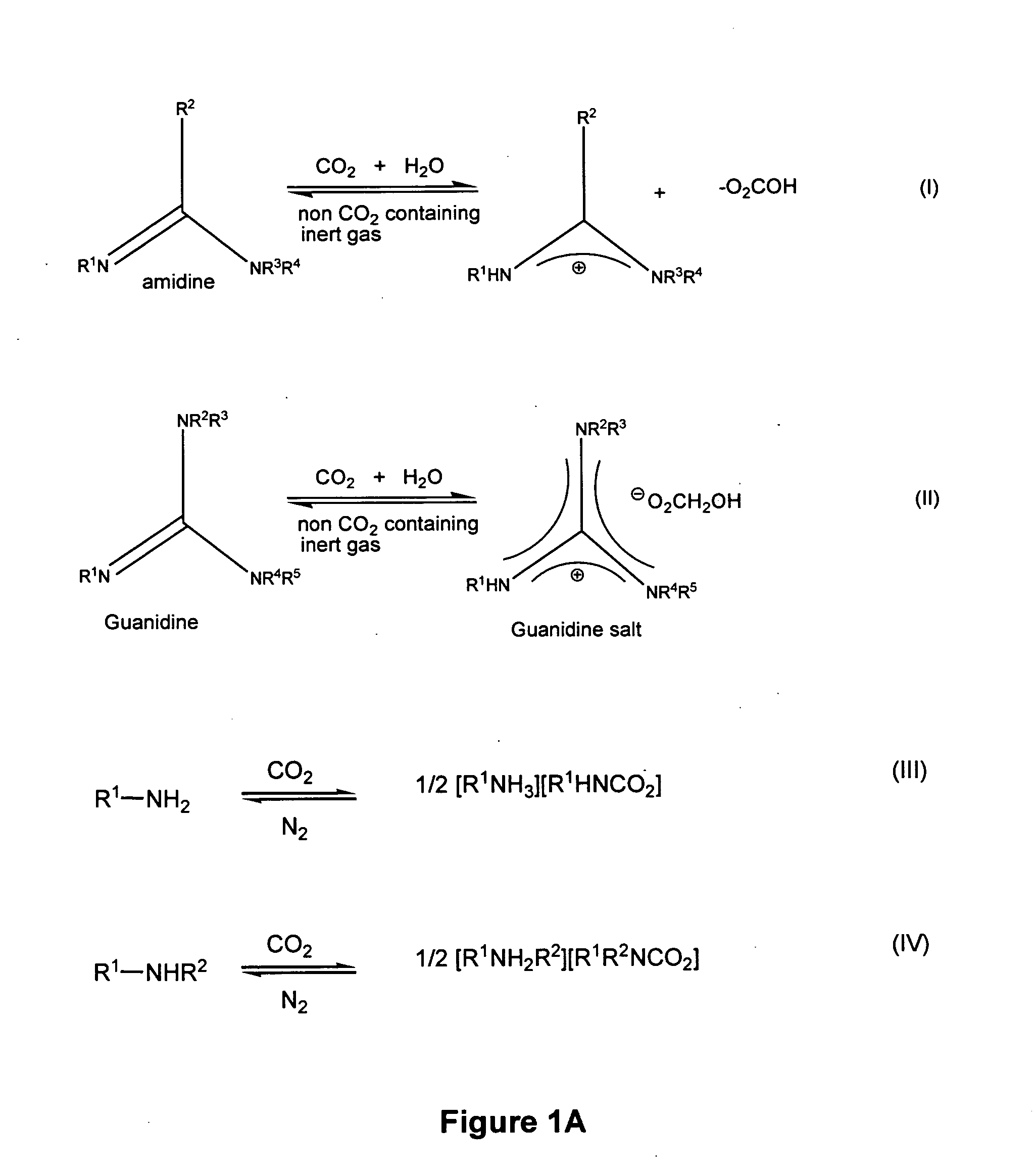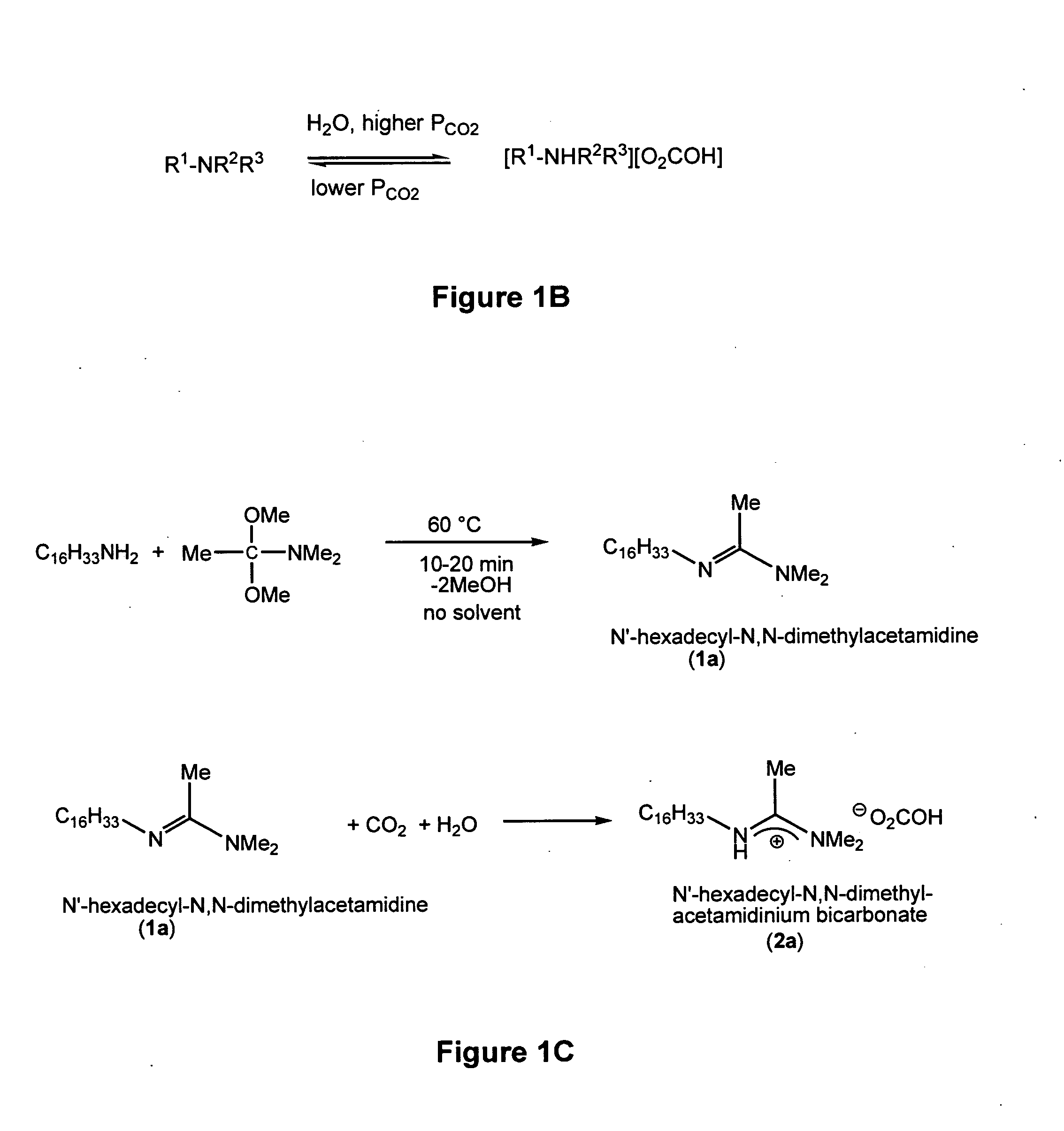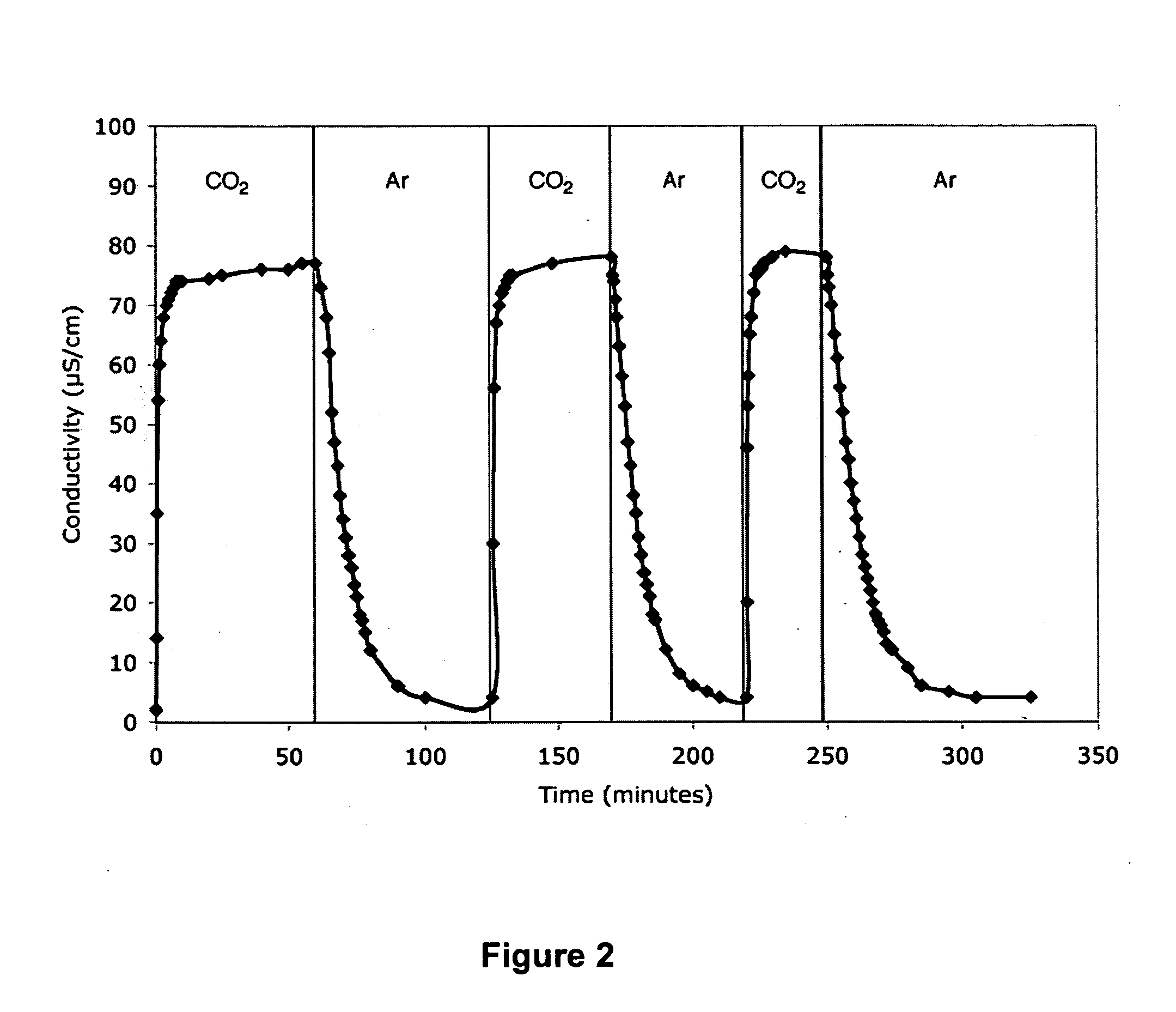Reversibly switchable surfactants and methods of use thereof
a surfactant and switchable technology, applied in the field of surfactants, can solve the problems of environmental damage, difficult to break down and recover immiscible liquids, and not solve, and achieve the effect of reducing the number of oxidized substances
- Summary
- Abstract
- Description
- Claims
- Application Information
AI Technical Summary
Benefits of technology
Problems solved by technology
Method used
Image
Examples
working examples
Materials
[0121]CO2 (Praxair, SFC grade, 99.998%), argon (Praxair, 99.998%) and air (Praxair, extra-dry grade) were used as received. A sample of commercial light crude oil was donated by Shell. A sample of Federated light crude was donated by Imperial Oil through Environment Canada. A sample of B-heavy crude oil (density 0.89 g / mL) was purchased from Nacalai Tesque, Inc. through Fisher Scientific, Ottawa, Ontario, Canada (Code 44132-04). Alaska North Slope (ANS) heavy crude oil was provided through NOM (U.S. National Oceanographic and Atmospheric Administration). Scotian light gas condensate (an oil which is a by-product of a gas well off of Nova Scotia) was provided by Department of Fisheries and Oceans Canada. For CMC measurements, water was purified with a Millipore Simplicity™ water purification system to generate water exceeding ASTM Type 1 water quality standards. For all other experiments, deionized water was used. Dimethylacetamide dimethyl acetal was received from TCI Ameri...
example 1
Synthesis and characterization of N′-alkyl-N,N-dimethylacetamidine compounds
example 1a
Synthesis and characterization of N′-hexadecyl-N,N-dimethylacetamidine (1a) and N′-dodecyl-N,N-dimethylacetamidine (1b)
[0122]N′-alkyl-N,N-dimethylacetamidines 1a (N′-hexadecyl-N,N-dimethyl-acetamidine and 1b (N′-dodecyl-N,N-dimethylacetamidine) were synthesized by heating an equimolar amount of the appropriate long chain primary amine with dimethylacetamide dimethyl acetal for 10-20 min at 60° C. without solvent (Scoggins, M. W., J. Chromatograph. Sci. (1975) 13: 146-148) (see FIG. 1C). Methanol, a byproduct, was removed by evaporation under high vacuum. The yield of the N′-alkyl-N,N-dimethylacetamidines was quantitative and was determined gravimetrically. The purity was 90% and was determined by 1H NMR spectroscopy. The major impurity was N-alkyl-O-methylacetacetimidate (N-hexadecyl-O-methylacetacetimidate 3a, and N-dodecyl-O-methylacetacetimidate, 3b), as identified by 1H NMR and gas chromatography / mass spectroscopy. Either the unpurified 1a or the unpurified 1b could be used as a...
PUM
| Property | Measurement | Unit |
|---|---|---|
| pressure | aaaaa | aaaaa |
| temperature | aaaaa | aaaaa |
| temperature | aaaaa | aaaaa |
Abstract
Description
Claims
Application Information
 Login to View More
Login to View More - R&D
- Intellectual Property
- Life Sciences
- Materials
- Tech Scout
- Unparalleled Data Quality
- Higher Quality Content
- 60% Fewer Hallucinations
Browse by: Latest US Patents, China's latest patents, Technical Efficacy Thesaurus, Application Domain, Technology Topic, Popular Technical Reports.
© 2025 PatSnap. All rights reserved.Legal|Privacy policy|Modern Slavery Act Transparency Statement|Sitemap|About US| Contact US: help@patsnap.com



